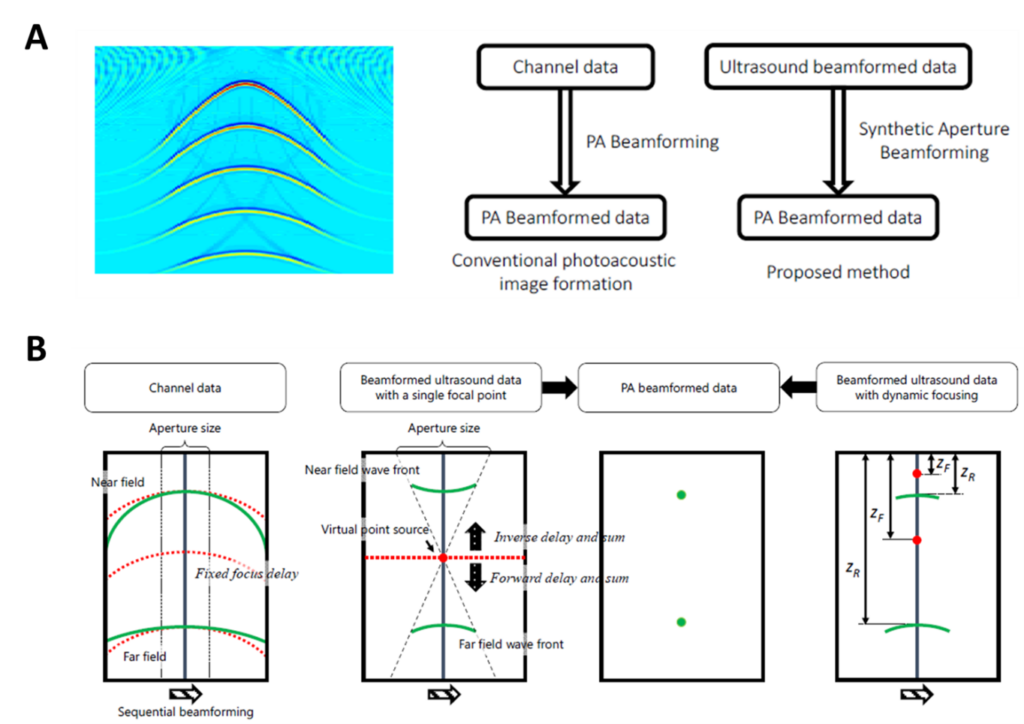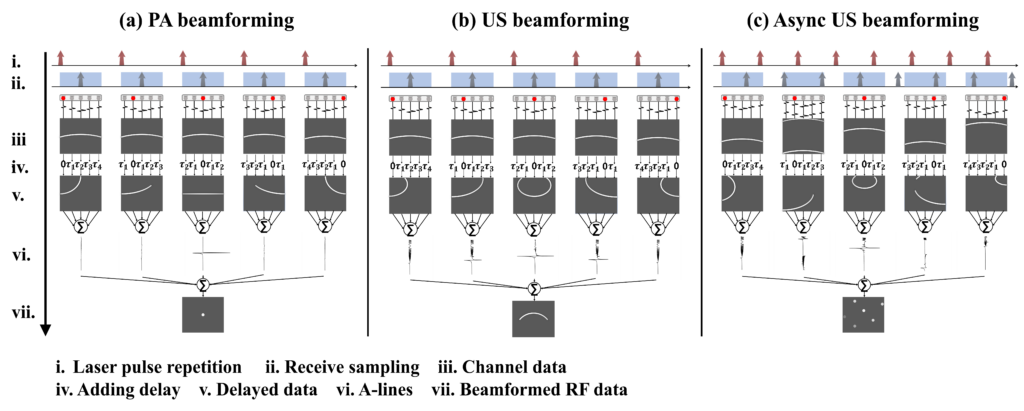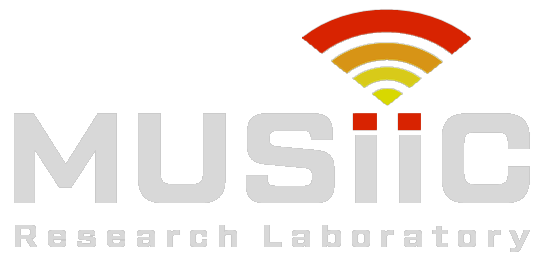Our lab has been making effort toward popularizing photoacoustic imaging, and one of the aims is to lower the cost of photoacoustic imaging system. Instead of customizing stand-alone photoacoustic imaging systems, we propose to recycle or refurbish clinical ultrasound systems.
The first challenge is the access to channel data. Unlike research platforms, clinical ultrasound system usually only provides post-processed data, i.e., the images ready for diagnosis. However, time of flight of the photoacoustic signal is different from the ultrasound signal – the former is induced in tissues and the latter is initially transmitted from the transducer. Therefore, different beamforming is required, which also means the access to channel data is necessary.
Nonetheless, extracting channel data is not easy, given the complexity of the hardware and the data size. Instead of changing the circuitry to acquire a humongous amount of channel data, we developed synthetic aperture based photoacoustic re-beamforming (SPARE) to re-beamform the post-beamformed RF data1-3. As indicated in Figure A, instead of beamforming the channel data, the SPARE beamformer reconstructs the post-beamformed RF data to form PA images. Specially, as indicated in Figure B, SPARE employed synthetic aperture technique and considered the time of flight difference between ultrasound imaging and photoacoustic imaging in the reconstruction. By using SPARE, any ultrasound beamformed RF data from commercial ultrasound platform can be potentially applied for PA reconstruction.

Another challenge is the synchronization between the ultrasound platform and the light source (typically a pulsed laser) system. On research ultrasound platforms, there are input/output triggers to control the image frame rate. However, this is also something clinical machines do not provide. To tackle this challenge, we developed an automatic laser synchronization method and inverse beamforming. Check these interesting feasibility studies here4,5.

- Zhang HK, Huang H, Lei C, Kim Y, Boctor EM. Software-based approach toward vendor independent real-time photoacoustic imaging using ultrasound beamformed data. In Photons Plus Ultrasound: Imaging and Sensing 2017 2017 Mar 3 (Vol. 10064, p. 100643O). International Society for Optics and Photonics.
- Zhang HK, Guo X, Tavakoli B, Boctor EM. Photoacoustic imaging paradigm shift: towards using vendor-independent ultrasound scanners. In International Conference on Medical Image Computing and Computer-Assisted Intervention 2016 Oct 17 (pp. 585-592). Springer, Cham.
- Zhang HK, Guo X, Kang HJ, Boctor EM. Photoacoustic image reconstruction from ultrasound post-beamformed B-mode image. In Photons Plus Ultrasound: Imaging and Sensing 2016 2016 Mar 15 (Vol. 9708, p. 970837). International Society for Optics and Photonics.
- Wu Y, Zhang HK, Kang J, Boctor EM. An economic photoacoustic imaging platform using automatic laser synchronization and inverse beamforming. Ultrasonics. 2020 Apr 1;103:106098.
- Wu Y, Zhang HK, Boctor EM. Enabling vendor independent photoacoustic imaging systems with asynchronous laser source. In Photons Plus Ultrasound: Imaging and Sensing 2018 2018 Feb 19 (Vol. 10494, p. 104945M). International Society for Optics and Photonics.
